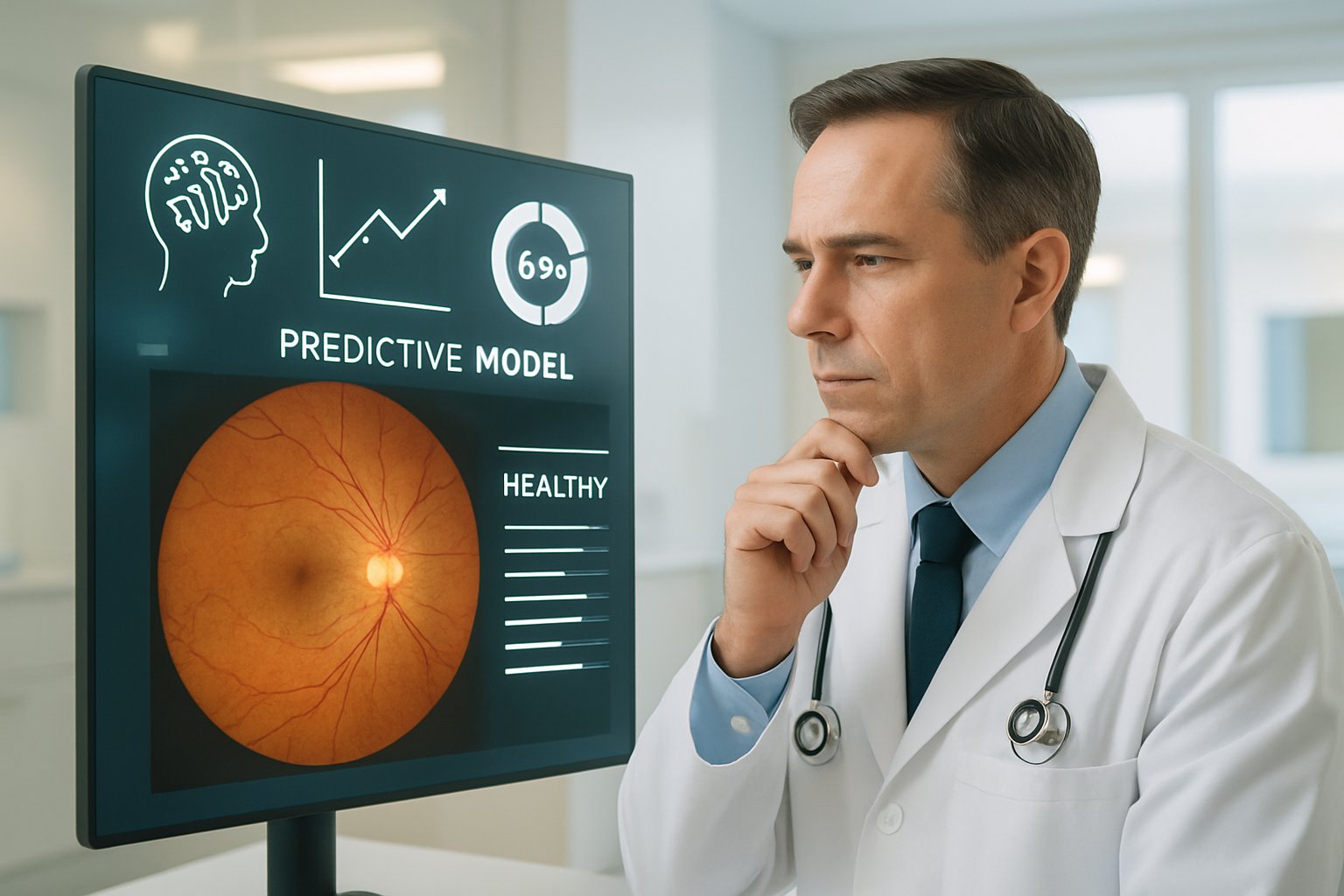
AI CERTS
9 hours ago
Google’s Eye-Scan AI Reshapes Medical Diagnostics
Consequently, readers will grasp commercial potential, scientific reality, and regulatory obstacles facing retinal AI tools. Professionals in Ophthalmology will also find practical steps for clinical adoption. Therefore, explore the evidence before embracing the bold promises. Subsequently, the discussion will track foundation models, metrics, and governance. These points set the stage for a balanced view of the emerging field.
Evolving Medical Diagnostics Landscape
Historically, Medical Diagnostics relied on laboratory inventories, isolated imaging, and specialist interpretation. In contrast, foundation models fuse data streams to detect disease signatures earlier.

Cross-modal reasoning promises to integrate genomic texts and fundus photos within a single decision pipeline. Moreover, the retina offers a cheap, non-invasive portal for large population screening.
Self-supervised Predictive Modeling reduces label costs by learning structure from unannotated pixels. Consequently, Medical Diagnostics can evolve toward proactive screening rather than reactive treatment.
These shifts redefine the diagnostic landscape. However, understanding the specific retinal advances is essential before investing.
Retinal AI Momentum Grows
Academic teams ignited momentum with RETFound, trained on 1.6 million unlabeled retinal images. Furthermore, RETFound matched competitors using only ten percent labeled data.
The model impressed Ophthalmology researchers by extending to systemic risk scoring and preliminary Rare Diseases signals. In contrast, earlier narrow networks struggled outside diabetic retinopathy benchmarks.
Oculomics Field Explained Clearly
Oculomics studies subtle vascular and neural patterns visible through fundus photography. Subsequently, algorithms link those patterns with cardiovascular, neurological, and metabolic conditions.
Therefore, a single eye scan may eventually flag whole-body risks.
These findings show why retinal AI momentum continues accelerating. Next, we examine Google's contribution to this surge.
Google's New Model Foundations
Google Research released MedGemma and its image encoder sibling MedSigLIP in July 2025. However, Google framed both as research baselines, not turnkey Medical Diagnostics products.
Nevertheless, MedSigLIP was pre-trained on fundus images, enabling rapid Predictive Modeling for ocular tasks. Ophthalmology departments now test MedSigLIP on diabetic screening pilots.
AlphaMissense, another DeepMind product, complements imaging by classifying 71 million genetic variants for Rare Diseases assessment. Moreover, combining imaging encoders and genomic predictors could unlock future multi-modal Medical Diagnostics pipelines.
- MedGemma 4B scored 64.4 percent on the MedQA benchmark.
- MedGemma 27B reached 87.7 percent on the same test.
- Radiologists deemed 81 percent of AI chest X-ray reports clinically acceptable.
- AlphaMissense classified 89 percent of 71 million variants at 90 percent precision.
- RETFound trained with 1.6 million unlabeled retinal images using self-supervision.
Collectively, these metrics display promising baselines yet underline the need for careful fine-tuning. For developers, these resources shorten the path to novel Medical Diagnostics proofs of concept. However, bold claims around rare disease prediction warrant closer scrutiny.
Rare Disease Detection Claims
Media outlets sometimes declare Google already diagnoses Rare Diseases from a single photo. In reality, the company offers components rather than validated end-to-end workflows.
Validated Medical Diagnostics for Rare Diseases will require multi-center trials with diverse patients. Moreover, low prevalence complicates statistical power, even for massive foundation models.
RETFound's Nature study reported AUC above 0.9 for common disorders, yet lower for scarce cases. Consequently, robust Predictive Modeling depends on balanced cohorts or synthetic augmentation strategies. Google has not yet published peer-reviewed retina metrics for rare disorders.
These gaps temper the current excitement. Therefore, the conversation shifts toward validation hurdles.
Clinical Validation Roadblocks Ahead
Regulators insist that Medical Diagnostics tools undergo prospective trials before deployment. However, many foundation models remain pre-clinical, lacking external audits or FDA submissions.
Recent Med-Gemini errors revealed that models sometimes hallucinate anatomically impossible statements. Therefore, developers must embed human oversight, version control, and bias analysis during Predictive Modeling workflows.
Practical Deployment Risk Considerations
Clinicians highlight four practical hurdles:
- Data privacy agreements restrict cross-border image pooling.
- Edge hardware constraints limit on-device inference times.
- Explainability demands user-friendly saliency maps.
- Liability frameworks remain unsettled for misdiagnosis cases.
Nevertheless, Google's single-GPU releases lower technical entry barriers for Ophthalmology startups. Professionals can enhance expertise with the AI+ Healthcare™ certification. Consequently, teams gain structured knowledge on safety, ethics, and regulatory compliance for next-generation Medical Diagnostics platforms.
These measures bridge the gap between prototypes and regulated products. Meanwhile, strategic planning accelerates responsible innovation.
Google's foundation work energizes the retinal AI ecosystem. However, proven Medical Diagnostics remain a destination, not today’s reality. RETFound and MedSigLIP together illustrate how self-supervision and open weights reduce data requirements. Moreover, deploying these models for Rare Diseases demands larger cohorts, transparent benchmarking, and strict governance. Consequently, clinics should partner with research groups, regulators, and industry to co-design validation studies. Teams pursuing predictive excellence should master model stewardship through continuous monitoring and bias mitigation. Additionally, earning the AI+ Healthcare™ credential strengthens credibility with procurement boards. Ultimately, Medical Diagnostics will benefit when robust evidence merges with agile engineering and ethical oversight. Act now: review the open code, pilot safely, and champion evidence-driven patient impact. With disciplined execution, these advances could make Medical Diagnostics faster, fairer, and globally accessible.



